 |
|
|
 |
|
 |
 |
 |
|
 |
|
 |
 |
|
|
|
 |
|
|
|
A service dress uniform to an Air Force 2nd Lieutenant |
|
|
 |
|
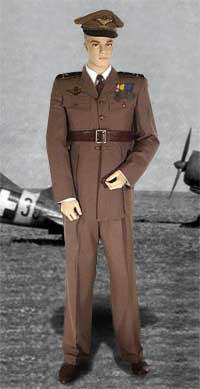 |
|
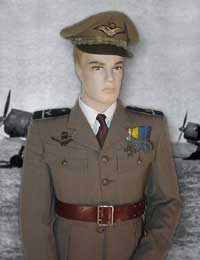 |
|
|
| A closer look at the torso. Rank was designated by the boards. On the flying suit, the boards would be on the sleeves. This officer is ranked as a 2nd Lieutenant. Notice the difference between the wings on the chest and on the cap. The wing on the chest has straight shoulders. The insignia on the cap has rounded shoulders. Enlisted pilots wore identical insignia but they were silver instead of gold. |
|
|
| The uniform of the Hungarian Air Force was the same as the Hungarian Army. Shown here is the lightweight service tunic in a whipcord material. The officer's overcoat is made of doeskin wool. |
|
|
Here is the same officer, service tunic and pants of the same material with a brown garrison belt and brown shoes. The tie is brown and actually is a HAF service issue tie. |
|
|
|
|
 |
|
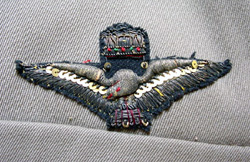 |
|
|
|
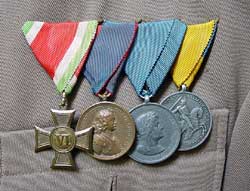 |
|
| The Hungarian Air Force wing. This breast badge was considered the aviator designation as opposed to a branch of service device. Officer's had an eagle sewn out of Gold, NCO's out of silver. |
|
|
| Many photos of Hungarian photos show officers wearing their full medals as opposed to a bar of ribbons (see photo at left). A practice popular with the Germans and Russians. The medals here are fairly standard, with the first medal probaly not belonging to the uniform as it was an NCO award for 6 years of loyal service. The other three in order from left to right are a) Occupation of South Slovakia 1938, b) Occupation of North Transylvania, and c) Occupation of the Baka-Baranja Region 1941. |
 |
|
|
Captain Emery von Myiradi-Szabo in his service tunic. The belt and dagger were worn on parade occassions.
|
|
|
|
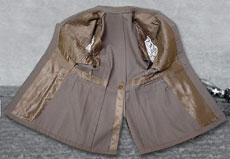 |
|
 |
|
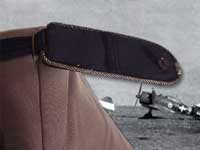 |
|
|
| The interior of the tunic showing the lining and the tailoring. Like the Germans, the tunic had built in supports for the garrison belt. |
The 2nd Lt. boards have gold tress and piping around the edge. The single stripe denotes the 2nd. Lt. If the tress and button were in silver, the rank would be for Sgt. Other ranks lower than NCO would have no piping and thinner tress in bronze. |
The inside of the board showing the construction and the attachemt to the jacket with a single button. There are more than one attachment. I have seen pairs with a simple snap set. They almost all seem to be the slip-on variety, not sewn into the clothing. |
|
|
|
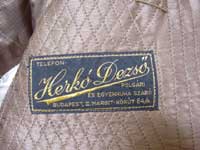 |
|
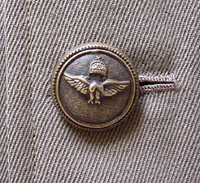 |
|
The service tunic button for the Air Force. The service tunic has light gilt over bronze buttons while the overcoat has bright gold buttons. Both seem to be officer grade as Other Ranks had a deep bronze button. |
|
|
| Like many Air Forces, if the officer could afford a tailored uniform, they would get one. This is a beautiful label from a tailor in Budapest. |
|
|
|
|
 |
|
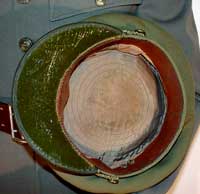 |
|
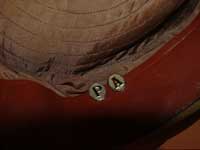 |
|
|
| A closeup of the hat showing the owner's initials uniquely set with little metal labels. |
|
|
The officer's visor cap. These are fairly hard to find as usually one finds the soft garrison (side) cap. The cap is made of whipcord material but of a greener shade than the tunic. The bill is made of green-died leather. The twisted cord was for all officer ranks. |
|
|
|
The interior of the hat with the quilted lining and leather sweatband. There is no maker label. The visor seems to be made of some flexible leather. |
|
|
|
|
|
|
|
|
|
| All images © 2000-2002 Tod Rathbone |
|
|
|
|
|
|
|
|
|
|
|
|
|
|
|
|
|
|
|
|
|
|
|
|
|
|
|
|
|
|
|
|
|
|
|























